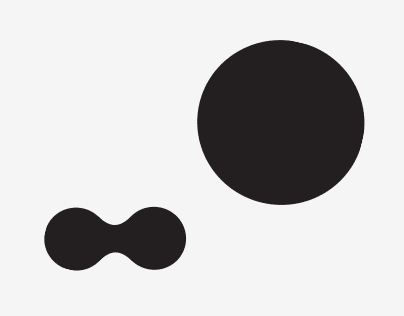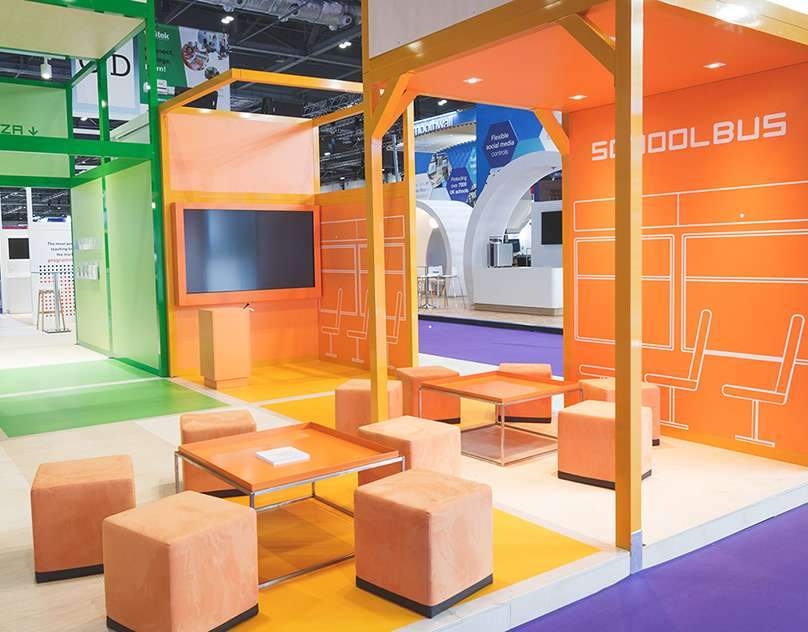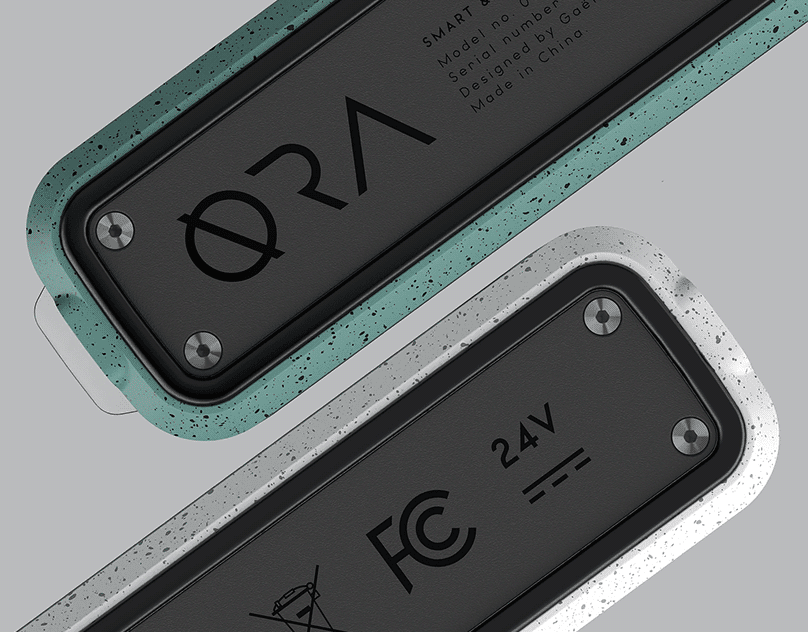Oskar Hansen and his Open Form which inspired the Centre’s architect. According to the Open Form theory, the artist does not produce a finite work of art when creating an artistic artefact, but rather creates a possibility of contextualisation and interpretation. We propose a living visual identification which interacts with its viewers and responds with its form to the current events and activities going on at the Centre.
Usability and functionality of the identification system
The sign is only the starting point for creating the entire visual identification. Additional elements are developed on its basis which together become a visual language to be used in the visual information system and as a medium to tell various stories, for example, through the form of information materials.
The logo is intended as a tool meant to assist building brand awareness among the visitors and potential partners. In order to present the versatile character of the architectural form, and to highlight the concentration of various initiatives in one place, we decided to base our graphic sign on the simplest possible form, thus giving us a possibility to create an array of interesting symbols on its basis. The fonts we proposed were selected to combine tradition with modernity. The contemporary Realtime font was chosen to serve as the information medium while the 18th century Caslon Graphique is used to convey the values of humanism. With this combination of fonts we are able to show diversity, cooperation and timelessness being the focus of the Centre.
No limits to form, colour and motion – active creation of identification
A lack of limitations was one of our priorities. Adopting a flexible initial form of the sign enabled us to create an endless array of its variations in many different dynamic arrangements and in many different colour combinations originating from the same colour scheme. With the viewer contributing to the shape of the identification we escape a narrow definition of culture. The living identification is fluid, ever-changing and multi-coloured. Momentary in its form and timeless in its idea.
What can be seen in the presented identification?
The image of the Centre for the Meeting of Cultures in Lublin as an institution that has a fully developed, distinct personality while remaining in constant motion and open to change.

The selected typography is intended to combine modernity with tradition which is why we decided to use the contemporary Realtime font and the 18th century Caslon font. This combination reflects the dynamics of change, links tradition with modernity, highlights diversity, cooperation and timelessness. Because of the simple form of the sign, our main goal was to choose a basic font of a distinct character.

We adopted a simple classification of the events which will take place at the Centre, based on how they are perceived by the public. Visitors will experience static or kinetic events that incorporate predominantly images or sounds, or a combination of all the above functions in various configurations. We assigned a different colour to each such function. A colour scheme was then created which is to become a pattern book used to colour-code the events offered by the Centre. This gives us an unlimited “open” choice within a consistent visual language.

We propose a sign which changes in time. This would stress the idea of open form and the meaning of the sign as an information medium that is responsive to its environment. The sign announces upcoming events by a dynamic change in its form and a gradual change in its colour: from black to a given event's specific colour code depending on how much time is left before the start of the event. To achieve this effect we would use the image from a camera, for example showing the square in front of the Centre, which would then be analysed and processed in a dedicated application, created in Processing. The result would be constantly updated on the server to create a living identification that changes in real time in all the online media and, if needed, also on the Centre’s facade.







https://www-ccv.adobe.io/v1/player/ccv/FkZv8iLhJ6Z/embed?api_key=behance1







In order to preserve the dynamics of the sign in all printed media, we propose creating the following signs for different forms of the Centre’s regular activity









Research and strategy: Aleksandra Naborczyk-Staniewska
Concept and design: Maciej Bączkowski, Wojciech Staniewski
If you found this article valuable, consider sharing it
































